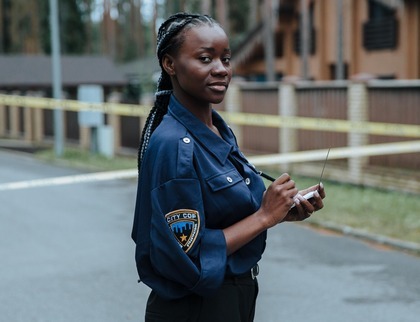27 January, 2023
Years after the start of the COVID-19 pandemic, we’ve witnessed firsthand the negative effects this global health crisis has had on social connections, physical health, mental health, and the economy. Among the less obvious interpersonal and political impacts of the pandemic has been on crime rates, which have been deeply affected throughout the U.S. Criminologists and criminal justice researchers have sought to provide insights on that impact using statistical research on the changes in crime rates across the country, primarily focusing on violent offenses and property crime.
In this article, we will explore the research on pandemic crime rates across the country since 2020. We’ll also identify the misconceptions that many citizens have about the effects of COVID-19 on crime.
Misconceptions About Pandemic Crime Rates

In 2021, federal and national research institutions published their findings on pandemic crime rates. The data showed some alarming trends, such as a 9.2 percent increase in auto theft and a nearly 30 percent jump in homicide deaths. However, comprehensive research from the Department of Justice found that the total number of violent crimes — including rape and sexual assault, robbery, property crime, and auto theft — decreased by 22 percent.
The earliest reports on crime during the height of the pandemic came from media outlets that conducted surface-level data analyses on their own. One research review published in the American Journal of Criminal Justice showed that crime, overall, was exhibiting a downward trend. The review also critiqued media outlets like The Washington Post and CNN for utilizing limited metrics to compare early-pandemic crime rates to those in previous weeks, months, and years. This review asserted that the outlets employed an unreliable variety of data and anecdotal evidence.
Additional research by the Boston Area Research Initiative (BARI), an inter-university research initiative housed at the College of Social Sciences and Humanities at Northeastern University, established a data-support system on how the city of Boston was affected by the effects of the COVID-19 pandemic. Researchers at BARI published multiple reports on the pandemic’s impacts in its Living in Boston During COVID-19 series to explore these insights.
Like many news outlets, BARI researchers used 911 calls as a data source. They also collected 311 requests to address community and infrastructure issues and citations from the Public Works Department and Inspectional Services Department. These comprehensive data sets helped the BARI project to better track changes in multiple types of crime across Boston and allowed the research to avoid reliance on anecdotes.
Crime Science researchers offered some explanations for why certain crime rates performed the way they did at the beginning of the pandemic. Social distancing reduced pickpocketing. Fewer people walking on the streets meant fewer public robberies. As this global crisis continues to evolve, we’ll need more qualitative research and discourse to fully explore the changes in our sociological landscape and their impact on crime in America.
Changes in Crime Rates During the COVID-19 Pandemic
Criminal justice professionals are able to establish links between social problems and illegal activity. While the numbers and rates associated with crime are hard facts, as you can see below, there is a heavier burden on criminologists to discover why illegal activities are occurring, so that their research can influence policy that will prevent crime in the first place.
Homicide
Both the CDC and the FBI reported a 30 percent increase in the number of homicides from 2019 to 2020. The Council on Criminal Justice (CCJ) added that some of the largest increases in homicide rates during the pandemic occurred in smaller cities where the rate of homicide was usually much lower.
However, the CCJ also points out that while there had been sharp, noticeable increases in the number of homicides, the homicide rate in 2020 was actually much lower than it was in 1995 for the cities studied in their March 2021 update of the Pandemic, Social Unrest, and Crime in U.S. Cities report.
Starting in 2021, homicide rates hit a plateau, according to recent data from the CDC mortality dashboard. Both the CCJ and the CDC found that homicide rates declined from the peak in summer 2020 during the first quarter of 2021.
Homicide rates continued to decline in the first half of 2022, according to the CCJ, demonstrating a 2 percent decrease in the number of homicides, but the rate is still nearly 40 percent higher than in the first half of 2019.
Assaults
The CCJ’s March 2021 impact report reveals that the weekly rates for gun assaults and aggravated assaults reached a peak in the summer of 2020, with nearly 5.5 per 100,000 people and 11.75 per 100,000 people respectively. They also revealed that gun assaults slightly increased from 2020 to 2022. Aggravated assaults increased in the first half of 2022 compared to the same period in 2021.
Robbery, Burglary, and Larceny
The CCJ shows that the average per-week robbery reports was lower overall than in 2017, 2018, and 2019, but there was a serious decrease in robberies and larceny throughout 2020. Robberies increased in the first half of 2022 compared to the same period in 2021.
According to the CCJ, residential burglaries had been declining overall since 2017 and remained lower throughout 2020 and early 2021. All property crime went down from 2020 to 2022, but in the first half of 2022, property crime increased. Nonresidential burglaries — including commercial burglaries — were relatively steady throughout 2020 and early 2021 compared to previous years. However, there was an incredibly sharp spike reported around May 2020, presumably in connection to political activism associated with the Black Lives Matter demonstrations in protest of police brutality against Black Americans.
The CCJ then found that residential burglaries, nonresidential burglaries, and larcenies all increased in the first six months of 2022 compared to the first six months of 2021.
Motor Vehicle Theft
From late 2018, through 2019, and in early 2020, motor vehicle theft was relatively steady. But there was a clear increase in motor vehicle theft reports during the pandemic, with especially sharp increases in late 2020 and early 2021.
Researchers pointed out an increase in auto thefts starting in the summer of 2020. For 2022, the CCJ reported that motor vehicle theft increased in the first 6 months of 2022 compared to that same time frame in 2021.
Drug Offenses
Rates of drug offenses — including selling, production, and possession — had been steady since 2017. But there was a sharp decline when the pandemic began, followed by a sharp increase shortly thereafter. Early 2021 had more than 5,500 fewer drug offenses reported in the first quarter of 2021 than pre-pandemic 2020.
The Rise in Hate Crimes During the Pandemic
According to the FBI, there were more than 7,300 hate crimes reported in 2019, but more than 8,200 in 2020. Of all hate crimes reported in 2020, 63 percent were targeted at specific racial and ethnic groups, including Black and Asian people.
In the beginning of the pandemic, the lack of understanding about COVID-19 caused many media outlets to bombard people with information about the virus’s origins in China. This quickly became insidious, leading some Americans to hold racist views against Chinese individuals. Some outlets did little to challenge the rhetoric that promoted anti-Chinese sentiment and misinformation that blamed Asian communities for the spread of the pandemic. Researchers at Northeastern University linked this rhetoric to reactionary violence, which included 279 violent anti-Asian hate crimes reported in 2020, an increase from 161 the year prior.
Carlos Cuevas, professor of criminology and criminal justice and co-director of the Violence and Justice Research Lab at Northeastern, reminds us that the FBI’s data on hate crimes doesn’t account for slurs, hate speech, and harassment. These would be considered hate incidents, which are not criminal offenses.
In 2020, there were nearly 3,000 anti-Black and anti-African American hate crimes, almost 1,000 more reports than in 2019. After the killings of George Floyd, Ahmaud Arbery, Breonna Taylor, and other Black Americans, the U.S. saw protests and demonstrations across the country in support of the Black Lives Matter movement and its principles. At times, these demonstrations were met with backlash, leading to intense socio-political division in 2020, which could be related to the sharp increase in anti-Black hate crimes.
Director of the Institute on Race and Justice Jack McDevitt additionally points out that hate crimes are severely underreported, so these numbers may not even be totally accurate, especially with growing mistrust in law enforcement after the killing of George Floyd at the hands of Minneapolis police officers.
Northeastern University faculty and students are at the forefront of studying how the COVID-19 pandemic has and will continue to impact American life in the years to come. Comprehensive and contextual research can help criminologists better identify the attitudes, experiences, and environments that affect crime.
About Northeastern University’s Master of Science in Criminology and Criminal Justice
Available on our Boston campus, online, or in a mixed modality, the Master of Science in Criminology and Criminal Justice (MSCJ) from Northeastern University examines all aspects of criminological inquiry and the criminal justice process. Students benefit from the extensive resources of a globally renowned research institution as they explore strategies to prevent crime, encourage societal equity and justice, and reduce harm in the justice system.
Our world-class faculty teach advanced skills in qualitative and quantitative research and analysis while providing foundational knowledge in criminological and criminal justice theories and individualized mentorship. The MSCJ curriculum, which can be completed in one year, offers students and professionals the knowledge and skills needed for leadership roles in policymaking, research, analyst work, research directorships, and law enforcement. This program also features Northeastern’s world-renowned experiential learning opportunities, which place students in agencies and organizations where they can start making a difference. Plus, it includes a range of customization options, including a cybersecurity concentration and the ability to complete a graduate certificate in a related field.
PUBLIC AFFAIRS
Get Started Now
Fill out the form to learn more and download a brochure about Northeastern University’s Master of Public Administration, Master of Public Policy, Master of Science in Criminology and Criminal Justice, or Graduate Certificates.
You can also email publicaffairs@northeastern.edu or call us at +1 857.754.3734 to talk with one of our enrollment specialists.
